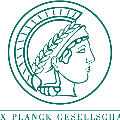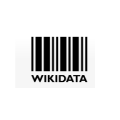Answering complex questions over textual resources remains a challenging problem$\unicode{x2013}$especially when interpreting the fine-grained relationships among multiple entities that occur within a natural-language question or clue. Curated knowledge bases (KBs), such as YAGO, DBpedia, Freebase and Wikidata, have been widely used in this context and gained great acceptance for question-answering (QA) applications in the past decade. While current KBs offer a concise representation of structured knowledge, they lack the variety of formulations and semantic nuances as well as the context of information provided by the natural-language sources. With BigText-QA, we aim to develop an integrated QA system which is able to answer questions based on a more redundant form of a knowledge graph (KG) that organizes both structured and unstructured (i.e., "hybrid") knowledge in a unified graphical representation. BigText-QA thereby is able to combine the best of both worlds$\unicode{x2013}$a canonical set of named entities, mapped to a structured background KB (such as YAGO or Wikidata), as well as an open set of textual clauses providing highly diversified relational paraphrases with rich context information.
翻译:文本资源方面的复杂回答问题仍然是一个挑战性问题 $\ unicode{x2013} $, 特别是当解释多个实体之间在自然语言问题或线索范围内出现的细微关系时, 如何解释在自然语言问题或线索中出现的细微关系时, 如何回答文本资源方面的复杂问题 。 诸如 YAGO、 DBpedia、 Freebase 和 Wikigata 等受奖知识库( KB) 已经在此背景下被广泛使用, 在过去十年中, 解答( QA) 应用的解答( QA) 获得了广泛接受。 虽然当前的 KBs 提供了结构化知识的简明描述, 但是它们缺乏各种配方和语义上的细微差别, 以及自然语言来源提供的信息背景。 有了 BigText-QA, 我们的目标是开发一个综合的 QA 系统化的系统化 系统, 能够以更冗余的知识图( KGG) 的形式回答问题, 将 结构化的( 即“ 杂” QA” ) 知识 和 结构化背景关系( 提供高度多样化的版本的KGOA ) 的文本和 提供高度多样化的背景关系的YA 。





